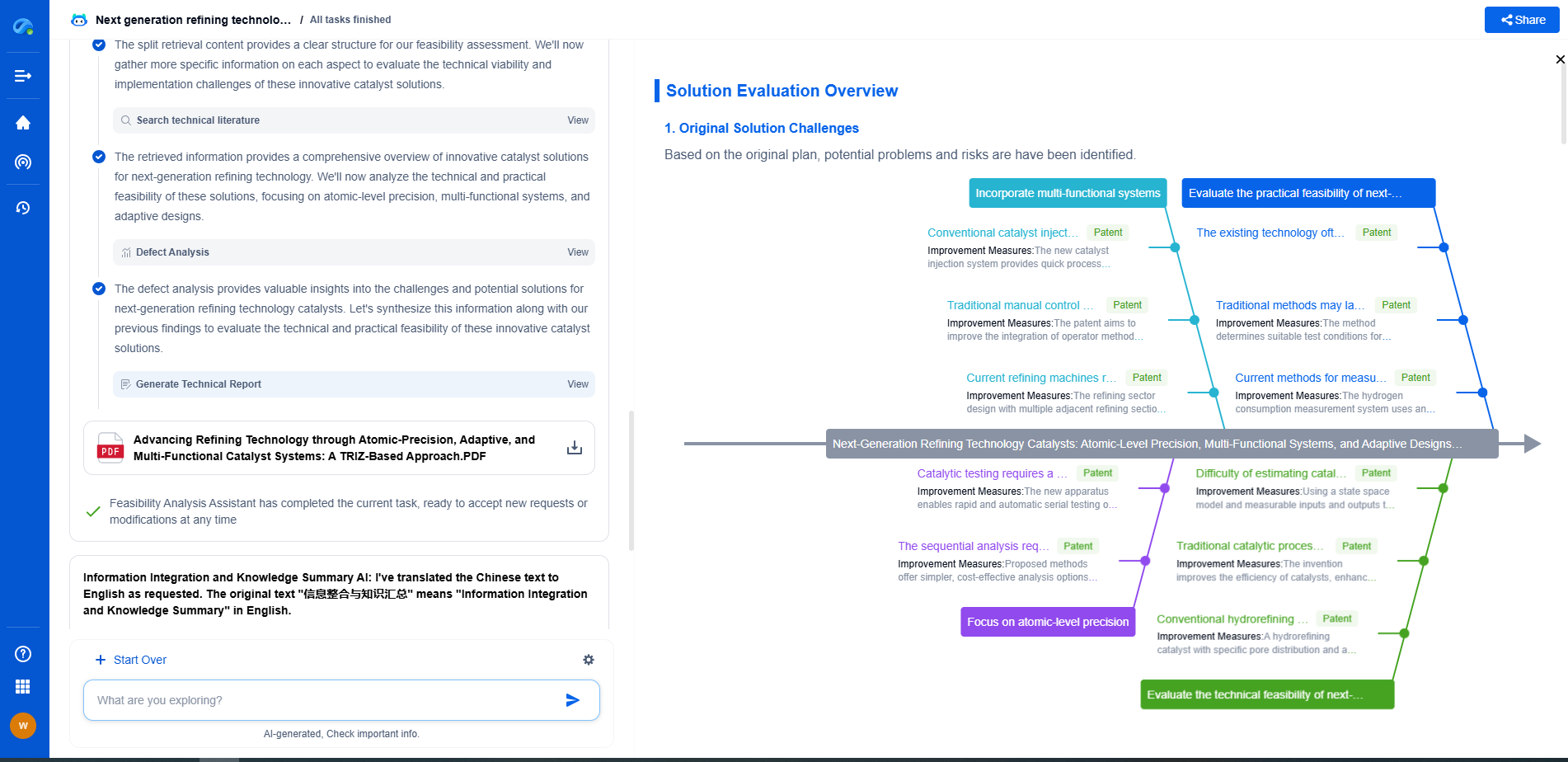Digital Multimeter Accuracy vs. Precision: What Really Matters for Your Application?
JUL 9, 2025 |
Accuracy and precision are two critical concepts that often get conflated but are essential to differentiate when discussing digital multimeters (DMMs). Accuracy refers to how close a measurement is to the true or accepted value. In contrast, precision relates to the repeatability or consistency of measurements. These distinctions are crucial, especially in applications where precise measurements are necessary for reliability and functionality.
For instance, if you are measuring voltage in a circuit and your DMM reads 5.01V when the actual voltage is 5.00V, your DMM is accurate within a margin. However, if you take multiple measurements and consistently read 5.01V, your DMM is precise but may not necessarily be accurate. Understanding these differences helps in choosing the right DMM for your specific needs.
Importance of Accuracy in Specific Applications
Accuracy is paramount in situations where exact measurements are crucial. Consider applications in the medical field, where precise electrical readings can impact the functionality of life-saving equipment. In such cases, a multimeter with high accuracy ensures that the devices are working within safe parameters, thus safeguarding patient health.
In industries like aerospace, where safety and precision are critical, the accuracy of a DMM ensures that all electrical systems function correctly, minimizing the risk of failure. In these settings, the cost of an inaccurate measurement can be extraordinarily high, both in terms of financial loss and potential human harm.
When Precision Takes Priority
While accuracy is essential, there are instances where precision takes precedence. For example, in a quality control lab conducting tests on a series of electronic components, consistent measurements are vital to ensuring each component meets the same standard. Here, a precise multimeter allows for uniformity across multiple measurements, even if there might be a slight deviation from the true value.
Additionally, in research and development, precision allows engineers to make incremental changes and see consistent results. This repeatability is key in fine-tuning processes and advancing technological innovations.
Balancing Accuracy and Precision
The ideal situation is to have both high accuracy and precision. However, budget constraints and specific application requirements often necessitate a choice. Understanding the demands of your application is critical in determining which aspect to prioritize.
For hobbyists or general-purpose tasks, a multimeter that offers a reasonable balance of both accuracy and precision generally suffices. Conversely, specialized industries may require more expensive models that provide superior accuracy or precision, tailored to the specific demands of their field.
Testing and Calibration: Ensuring Optimal Performance
Regardless of your choice, regular testing and calibration of your multimeter are vital. Calibration adjusts your instrument to ensure its accuracy aligns with accepted standards. Routine calibration mitigates the drift that occurs over time due to usage and environmental factors.
Regular testing also identifies any anomalies in precision, allowing for timely adjustments or repairs. Investing time in these practices enhances the reliability and longevity of your multimeter, ensuring it remains a trusted tool in your kit.
Conclusion
When choosing a digital multimeter, it's crucial to consider whether accuracy or precision—or a balance of both—is more important for your application. Understanding the specific demands of your tasks will guide this decision. Whether you're in a high-stakes industry or working on projects at home, understanding and implementing these concepts ensures your measurements are both reliable and meaningful.
Navigating the evolving world of electrical measurement—from high-precision signal integrity to advanced test protocols like BERT or TDR—demands more than just expertise; it demands smart tools.
Patsnap Eureka empowers you to keep up—by turning complex patent data, technical parameters, and industry signals into actionable insight. It’s your AI partner for exploring what’s next in test, measurement, and electrical diagnostics.
💡 Try Patsnap Eureka for free and see how it transforms the way you work with electrical measurement technologies.
- R&D
- Intellectual Property
- Life Sciences
- Materials
- Tech Scout
- Unparalleled Data Quality
- Higher Quality Content
- 60% Fewer Hallucinations
Browse by: Latest US Patents, China's latest patents, Technical Efficacy Thesaurus, Application Domain, Technology Topic, Popular Technical Reports.
© 2025 PatSnap. All rights reserved.Legal|Privacy policy|Modern Slavery Act Transparency Statement|Sitemap|About US| Contact US: help@patsnap.com

